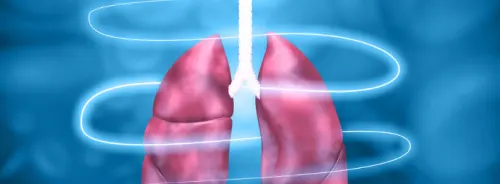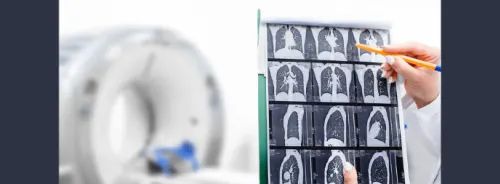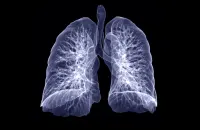Pulmonary lesions associated with cystic airspaces can range from benign to malignant conditions, including lung cancer, metastasis, infection, and autoimmune disorders. Diagnosing these lesions is challenging due to overlapping clinical and imaging characteristics between benign and malignant cases. Currently, no standardised strategy for managing such lesions exists, but clinical data, serial CT scans, and FDG PET/CT scans can aid in assessment. Tissue sampling may be necessary if a benign diagnosis cannot be established through clinical and radiological means. The presence of cystic airspaces can contribute to missed or delayed cancer diagnoses, according to Lung-RADS version 2022. CT-guided transthoracic core needle biopsy (CNB) is a standard procedure for evaluating pulmonary lesions, but its safety and diagnostic performance in lesions with cystic airspaces are not well-documented. While CNB has shown high diagnostic accuracy in lesions with pulmonary cavities, which also contain air components, lesions with cystic airspaces have distinct characteristics. They may pose increased risks during biopsy due to challenges in targeting the pathological tissue amidst the airspaces. The study aims to assess the safety and diagnostic performance of CT-guided CNB for pulmonary lesions with cystic airspaces.
Methodological Evaluation of CT-Guided Biopsy in Pulmonary Lesions
The study focused on assessing the safety and diagnostic efficacy of CT-guided core needle biopsy (CNB) in pulmonary lesions with cystic airspaces, aiming to address the challenge of potentially missed or delayed lung cancer diagnoses in this context. In this retrospective study, 90 patients who underwent CT-guided core needle biopsy (CNB) for pulmonary lesions with cystic airspaces were compared with a control group of 180 patients who underwent CNB for noncystic noncavitary lesions. The study analysed complications, nondiagnostic biopsies, and diagnostic performance in detecting malignancy. Surgical resection specimens were reviewed to assess the aetiology of cystic airspaces in lesions that underwent surgery after CNB.
Risk Factors
Results indicated that CT-guided CNB of lesions with cystic airspaces exhibited high safety and diagnostic accuracy, with comparable complication rates and diagnostic performance to CNB of lesions without cystic airspaces. Notably, factors such as prolonged procedure time (≥45 minutes) and longer transpulmonary needle paths (≥20 mm) were independently associated with a higher risk of complications.
CNB Effectiveness Among Adenocarcinoma Predominance
The predominant histologic type of malignant lesions with cystic airspaces was adenocarcinoma, and in resected specimens, the cystic airspaces often corresponded to tumour degeneration. These findings suggest that CNB is an effective tool for diagnosing pulmonary lesions with cystic airspaces, potentially aiding in timely cancer detection.
The study had some limitations, including its retrospective design and relatively small sample size. Additionally, the impact of operator experience on biopsy outcomes was not fully explored. Nevertheless, the results highlight the utility of CT-guided CNB in evaluating pulmonary lesions with cystic airspaces and emphasise the importance of considering this diagnostic approach in clinical practice to avoid missed or delayed cancer diagnoses.
Source: AJR
Image Credit: iStock







